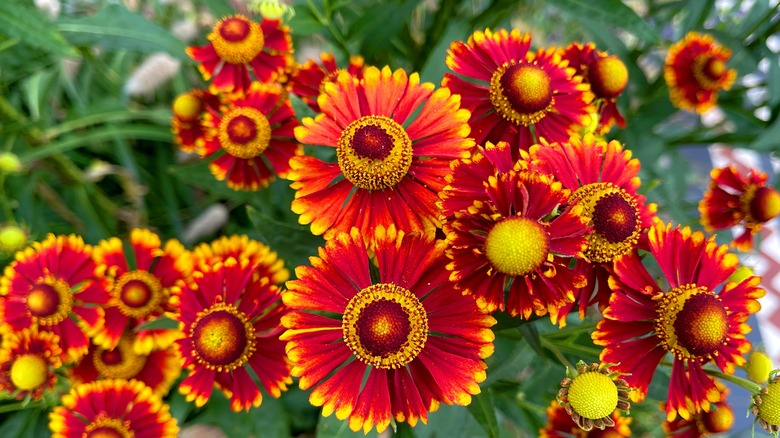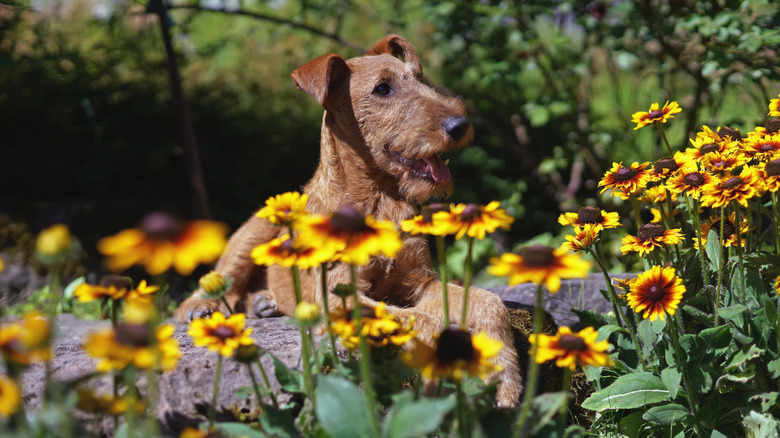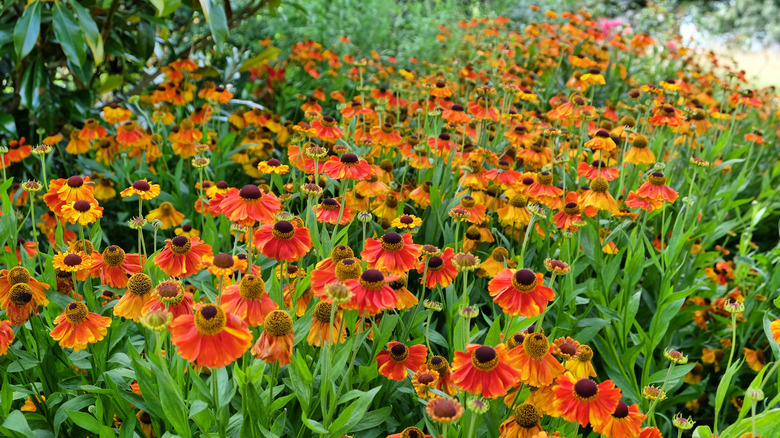This Colorful Plant Is Gorgeous, But Growing It Comes With Some Major Downsides
If you're planning a late summer or fall garden, chrysanthemums, black-eyed Susans, coneflowers, or marigolds may catch your eye at your local nursery. These plants are all members of the Asteraceae family, one of the largest known plant families with over 23,600 species. Another jaw-dropping member of Asteraceae is the helenium flower. These beautiful flowers go by many names: autumn sneezeweed, bitterweed, common sneezeweed, dogtooth-daisy, and Helen's flower, just to name a few. This plant earned the name "sneezeweed" because it was once picked and ground into a powder to intentionally induce sneezing, expelling phlegm and bad spirits! But we wouldn't recommend putting this plant anywhere near your face today. Heleniums are a wonderful flower to grow into fall, but they have a quality that can make them difficult to keep in the garden — even dangerous.
Whatever you like to call it, Helenium autumnale's striking colors and fiery halo shape are unmistakable, but these toxic plant varieties can bring disaster to your garden if they're not handled with caution. Here's what you need to know before planting heleniums, a beautiful and popular flower you need to keep pets away from.
Don't eat this garden eye candy
Helenium flowers are an herbaceous perennial that will bloom every autumn with gorgeous red, maroon, gold, or orange blooms depending on the variety. While it grows as a wildflower in many places across North America, Helenium's varying autumnal colors make it a tempting choice for fall gardens. Before you plant it in the garden or place it on your porch, it's crucial to understand the risks involved in growing this plant. Like many other beautiful and brightly colored organisms, helenium is toxic and poisonous to animals and humans if ingested, so it may not be safe for households with pets or small children.
All parts of this plant are poisonous, from its bright flowers to leaves, stems, and seeds. Helenium contains a compound called sesquiterpene lactone, which can cause eye, nose, throat, and skin irritation. Eating the plant will irritate the digestive tract and lead to nausea, salivation, sweating, and increased heart rate. If consumed in large quantities, the toxins can even cause vomiting, difficulty breathing, and seizures. On the bright side, Helenium autumnale has a bitter flavor that makes it unappealing to most people and pets, and it generally must be ingested in large quantities to cause any severe symptoms.
Plant carefully and keep an eye on pets
You may have already noticed that deer, rabbits, and other wildlife tend to avoid helenium, but this is definitely a toxic perennial you don't want to see in your yard if you have livestock like sheep or cows. If there aren't enough other grazing options available, sheep and cows can acquire a taste for helenium and eat it in quantities large enough to cause severe poisoning. Although it's uncommon for cats, dogs, or humans to ingest these plants because of their bitter taste, you should still use caution and consider alternative, look-alike plants if you frequently have pets or small children in your yard.
If you decide to plant this gorgeous flower in your garden, take proper precautions to protect children and pets. For example, don't plant it near playscapes or outdoor pet shelters, and consider growing the flower in containers so you can keep it close to the house and under a watchful eye. To reduce the risk of contact dermatitis, wear gloves when planting or pruning your helenium, and teach small children to admire this flower from a distance. Although it's toxic to many animals, this pretty autumn flower is still attractive to butterflies and bees and can be a valuable addition to pollinator gardens.


